KXL site visit / cedartree and mzsmith / part 1
in response to
by
posted on
Oct 02, 2008 01:53PM

Creating shareholder wealth by advancing gold projects through the exploration and mine development cycle.

On September 27 mzsmith, another significant investor and myself were graciously hosted at the KXL prospects. The overall impression was 1) a time- and cost-efficient assembly-line of thorough, intelligent and energetic prospecting, 2) clear demonstration of the expansion of KXL from the original one-horse-plus gold-show (Hercules) into a company with 4-plus major prospect areas including Hercules, West Geraldton, Maki, Bearskin/Sturgeon Bridge and 3) tremendous progress in prospecting, stripping, channel sampling as well as the total number of drill holes. This summary provided with thanks as well to Brian Maher and other key staff as well as the other participants for their inputs.
Main KXL camp:
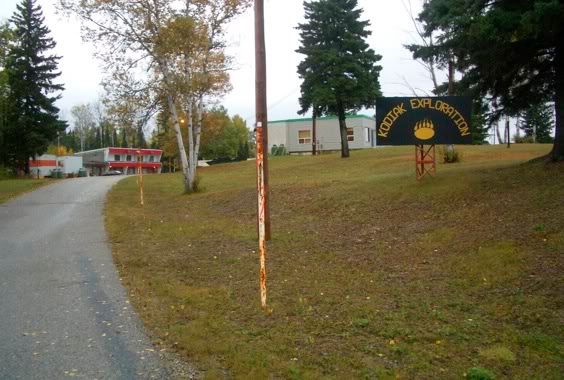
The first area visited was the West Geraldton / Kenogamisis claims, where the Boomerang, Portage and Goldstrike zones have been stripped and explored in the last three months. Stephen Roach, Senior Consulting Geologist, provided a cogent and measured explanation of the great deal of work already done and continuing at WG now.
Boomerang site:
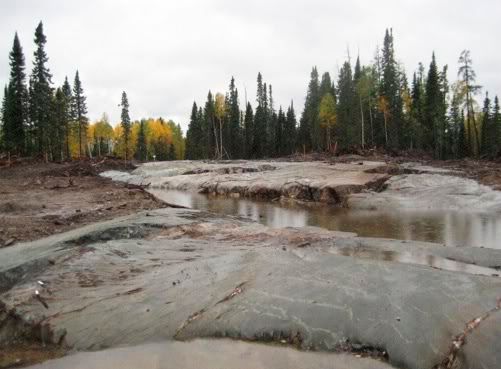
Stephen Roach, Snr. Consulting Geologist, describing mineralization in recent cores:
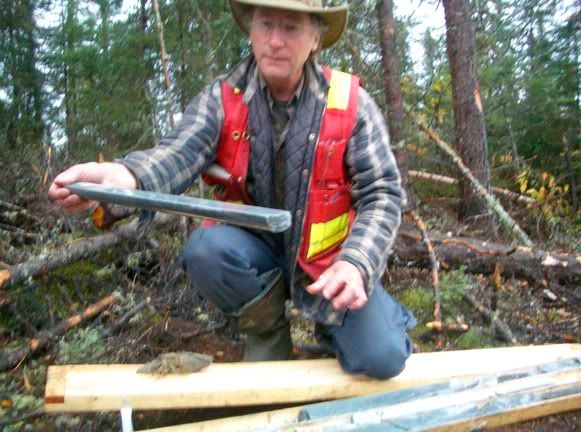
A number of drill holes have been put in awaiting assays and surface sampling is highly encouraging. It is probable from the geology that these are not only related claims but are part of a much larger kilometers-long / -wide set of prospects hosted in the the Portage Shear. The veins are near-vertical and are comprised of very highly folded metavolcanic intrusions / greenstone alteration, with arsenopyrite- and gold-bearing veins of quartz and sulphide. An example of a historic mine based on similar geology would be Timmins.
------------------------------------...
The next major area visited was Maki, where enormous progress has occurred since starting just six days before our arrival. A large area at Maki and the adjoining collinear Moosehorn prospect have been stripped. The veins hit on the historic drill holes have been confirmed, and channel sampling and the unburdening of additional veins was vigorously underway, evidenced by a cacaphony of rock saws and an operating hoe. Jason Chornobay, man of many talents both Corporate and in field work, presented the work underway, which will continue there for some weeks yet.
Maki site undergoing channeling:
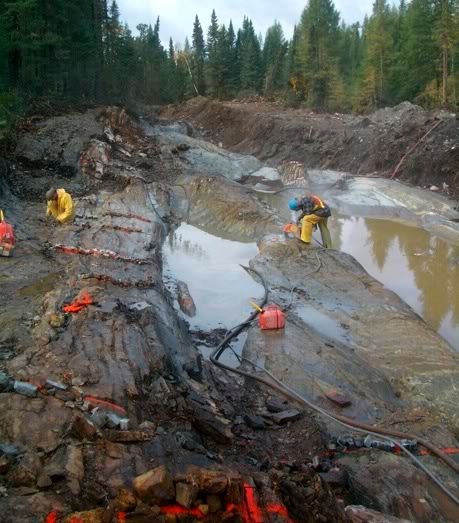
Boudinage or the pinching off and restarting of veins (think sausages) played hide and seek with the original two drill holes but with the overburden removal a system of folded, parallel and exceedingly mineralized veins are evident all along the prospect. We viewed a historic drill hole as well as "Sandra's Pit", a main part of the original historic claim.
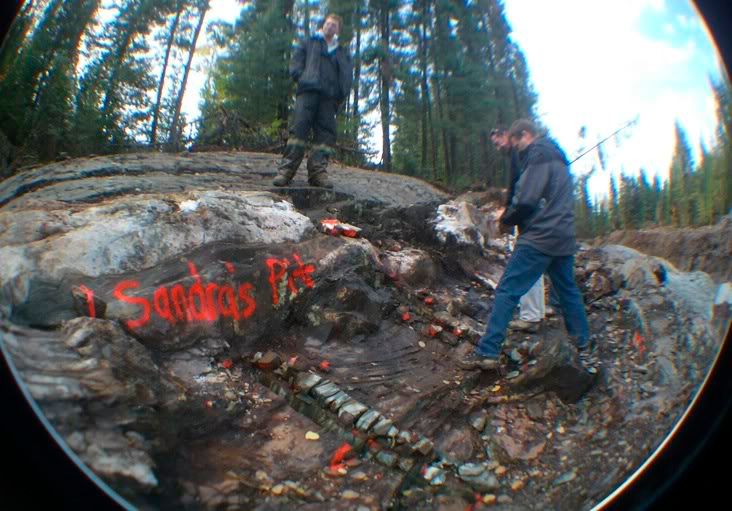
Maki is a different kind of system from Hercules and West Geraldton, being at the large scale highly linear east-west bands of metamorphosed and geochemically altered banded iron, with dramatic showings of arsenopyrite (beautiful and classic crystals) and associated gold in iron-stained sulphide depositions.
Maki channel closeup:
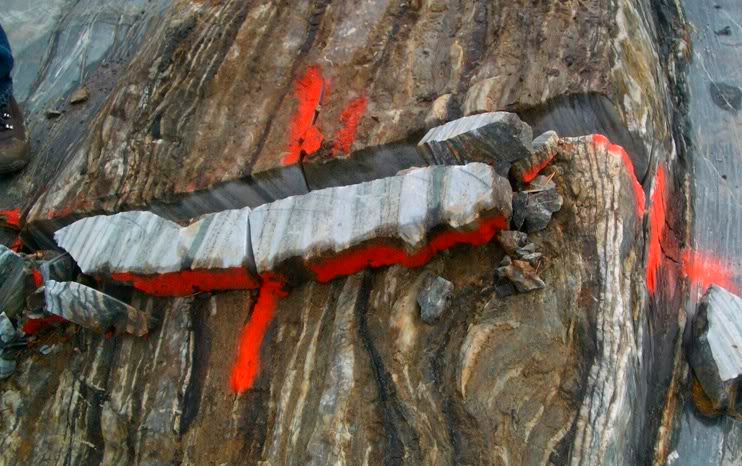
An example of a historic mine based on similar geology would be the nearby McLeod Cockshutt. Solomon's Pillars a few km away and Klist Lake can also be considered part of the same type of system and the whole set of prospects extends, as previously mentioned, many km in length.
continued in "KXL site visit ... part 2